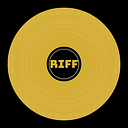THE GREATEST SONGS OF THE 1960s THAT NO ONE HAS EVER HEARD
Al Kooper’s Blood, Sweat & Tears!
Blood, Sweat & Tears — “The Modern Adventures of Plato, Diogenes and Freud”
OK, BST’s first album — Child Is Father to the Man — is really by Al Kooper’s Blood, Sweat & Tears, literally and figuratively. It is most celebrated for Kooper’s insertion of horns into rock and roll.
As Jessica Lipsky says, “[T]he real genius is in Child’s use of horns,” and as trombonist Dick Halligan says, “Just the fact that the horns were used as an actual part of the music . . . was not common that year. Horns were used in R&B bands already, but not really pop groups[]”.
Of course, I am featuring a wonderful ballad that doesn’t feature horns!
As to “Modern Adventures,” to Lipsky, “the utilization of a string ensemble, aka ‘soul chorus[]’ . . . imbued [it] . . . with a classical sensibility”.
The song is sometimes associated with “Eleanor Rigby.” To Gatot, it “reminds me of the work of The Beatles — something like Eleanor Rigby, but this one is much more PROGier.”
Matthew Greenwald proclaims that:
Utilizing Blood, Sweat & Tears’ musical diversity to its utmost degree, Al Kooper wrote this experimental piece to take advantage of their exploratory nature. A simple and profound string section takes the minor-key melody through the song without other accompaniment, not unlike the Beatles’ “Eleanor Rigby.” The lyrics are a bit weighty and dated, but overall the experiment works like a charm, and the song is less affected then when it was first released back in 1967.
As to the album as a whole, Sundazed Records says:
Child Is Father to the Man stands with such late-’60s art-pop landmarks as the Zombies’ Odessey and Oracle and Love’s Forever Changes in capturing the period’s seemingly limitless creative possibilities. [It] is a brilliant reflection of the desire of Kooper . . . to use an expanded instrumental lineup to explore a broader range of sounds, styles and compositional approaches. Towards that end, he launched Blood, Sweat & Tears, recruiting a stellar assortment of players from the worlds of rock and jazz . . . . The resulting album (produced by fabled studio genius John Simon) was a seamlessly eclectic psychedelic-rock-jazz-classical fusion . . . . Kooper’s expansive musical vision may have been a bit too far ahead of its time. Although it was a favorite of early FM album-rock DJs, Child Is Father to the Man barely scraped the Billboard Top 50 and failed to produce a hit single. However, in the years since, the album has been widely recognized for its expressiveness and originality, and embraced by successive generations of listeners. For instance, it received a prominent placement [#265] in Rolling Stone’s 2003 ranking of the 500 greatest albums of all time.
William Ruhlmann calls the album:
Kooper’s finest work, an album on which he moves the folk-blues-rock amalgamation of the Blues Project into even wider pastures, taking in classical and jazz elements (including strings and horns), all without losing the pop essence that makes the hybrid work. This is one of the great albums of the eclectic post-Sgt. Pepper era of the late ’60s, a time when you could borrow styles from Greenwich Village contemporary folk to San Francisco acid rock and mix them into what seemed to have the potential to become a new American musical form. . . . This is the sound of a group of virtuosos enjoying itself in the newly open possibilities of pop music. Maybe it couldn’t have lasted; anyway, it didn’t.
Jessica Lipsky adds:
[The album] is a uniquely late ’60s aural milieu that still sounds fresh today[, a] sensitive and seamlessly eclectic record [that] managed to be both familiar and far-out. . . . meld[ing] the soul, folk, and classical influences that pop audiences would’ve been attuned to, adding in blues phrasing and jazzy arrangements . . . . The not-so-secret ingredient to the album’s success (though Child never had any charting singles or broke the Top 40) was multi-instrumentalist Al Kooper . . . . [who] was eager to bring a horn section into the rock world . . . .
Where did the album come from? Doug Collette says that “[Kooper] sought to add horns to the [Blues Project], but its members demurred, leaving unfulfilled, at least temporarily, Kooper’s desire to act on how deeply moved he was seeing Maynard Ferguson’s big band as a teenager.”
Lipsky adds that:
To help fund his vision of a horn-laced rock album, which Kooper had originally hoped to record in London, he organized a star-studded benefit at Café Au Go Go featuring Judy Collins, Simon and Garfunkel, and Richie Havens. The show sold out, but the owner of the club allegedly added so many expenses to Kooper’s tab that he didn’t earn enough money at all. Refocusing a little closer to home and using the nucleus of the one-off band that had played the benefit, the eight-piece Blood, Sweat & Tears was born.
As to BST, Bruce Eder tells us that:
No American rock group ever started with as much daring or musical promise as Blood, Sweat & Tears, or realized their potential more fully — and then blew it all as quickly. From their origins as a jazz-rock experiment that wowed critics and listeners, they went on — in a somewhat more pop vein — to sell almost six million records in three years, but ended up being dropped by their record label four years after that. Blood, Sweat & Tears started as an idea conceived by Al Kooper in July of 1967. An ex-member of Blues Project, Kooper had been toying with the notion, growing out of his admiration for jazz bandleader Maynard Ferguson, of forming an electric rock band that would include horns and use jazz as the basis for their work. . . . That first version of Blood, Sweat & Tears played music that roamed freely through realms of jazz, R&B, soul, and even psychedelia in ways that had scarcely been heard before in one band. The songs were bold and challenging . . . . Their debut . . . seemed to portend a great future. The only thing it didn’t have was a hit single to get AM radio play and help drive sales. . . . Kooper left in March of 1968 . . . . That might’ve been the end of the story . . . . [but] the lineup was reshuffled and expanded, and for a lead singer they found a Canadian national named David Clayton-Thomas.
And the rest, shall we say, was a spinning wheel . . . .
See my website at bracefortheobscure60srock.com.

